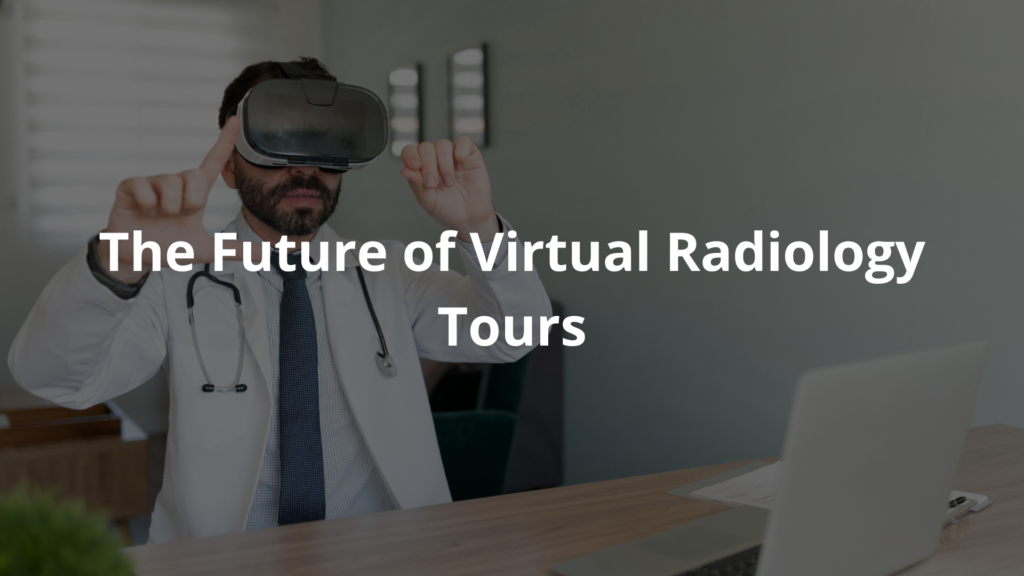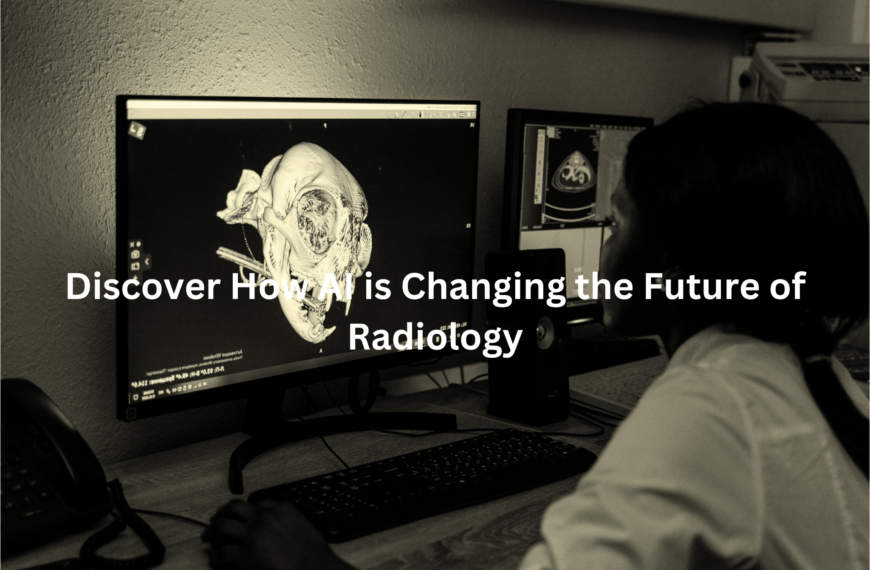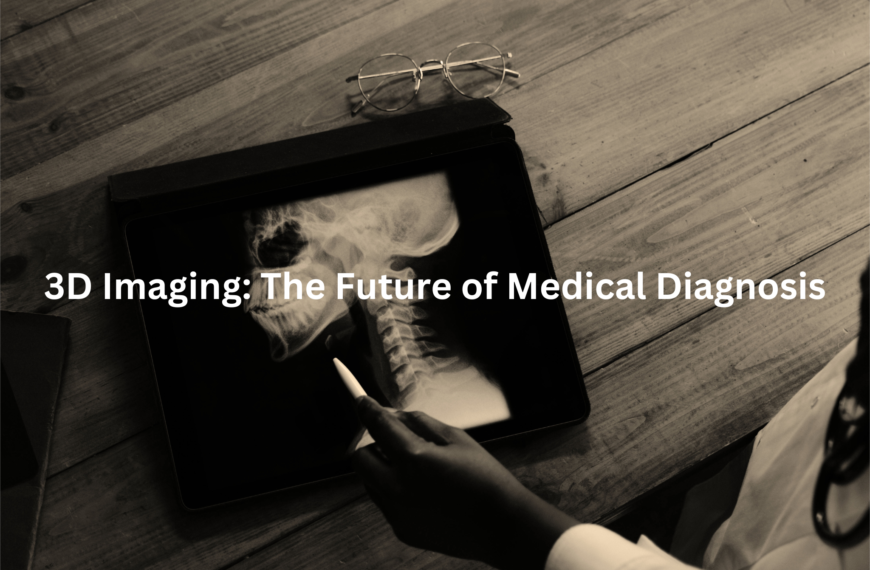Virtual radiology tours make learning about imaging fun and easy. Let’s explore how they help students and patients!
When you think of a hospital, you might picture white coats, stethoscopes, and lots of busy people. But what if you could step inside without ever leaving your home? This is where the magic of virtual radiology tours comes in.
These tours are like a window into the world of medical imaging. You get to see how things work, from big machines to the small details that help doctors understand what’s happening inside our bodies. It’s a whole new way to learn, and it can help students and patients alike. So, let’s explore how these tours are changing the game in radiology!
Key Takeaway
- Virtual tours help students learn about radiology in a fun way.
- Patients can feel more relaxed by seeing what to expect before their imaging visit.
- These tours use advanced technology to make learning easier and more interesting.
What is a Virtual Radiology Tour?
A virtual radiology tour is like stepping into a hospital or imaging centre without leaving your home. It’s a way to explore the places where doctors use advanced machines to take pictures of the body, like MRI and CT scanners. All you need is a computer or tablet, and you can see how these machines work and what the rooms look like. It’s almost like being there in person, but you’re sitting comfortably at home.
One time, during a virtual tour of an imaging centre, I felt like I was actually walking through the halls. I could see the big machines up close and learn about what they do. It was fascinating to see how everything worked, and I didn’t even have to leave my desk.
Key Benefits of a Virtual Radiology Tour:
- Get a close look at imaging machines like MRI and CT scanners
- Learn what the equipment does and how it’s used
- Perfect for medical students who want to study remotely
- Interactive and easy to follow
- Makes medical technology feel less intimidating
It’s a great way to learn about radiology, whether you’re a student, a patient, or just curious.
How Does it Help Patients?
For some patients, the idea of getting an imaging test can be a bit scary. The machines are big, the rooms can feel cold, and it’s all so unfamiliar. Virtual tours help take away some of that fear. By showing patients what the imaging centre looks like and how the machines work, they can feel more prepared and less anxious.
For example, a virtual tour might show the MRI room and explain how the machine takes pictures of the body. Patients can see where they’ll lie down and even hear about the sounds the machine makes. Knowing what to expect can make a big difference.
How Virtual Tours Help Patients:
- Show the layout of the imaging rooms
- Explain how machines like MRIs and CTs work
- Help patients feel more comfortable and prepared
- Reduce anxiety about the procedure
Many patients say they feel calmer after watching a virtual tour. It’s a simple way to make the whole experience smoother and less stressful.
Why is it Great for Medical Students?
Medical students can learn a lot from virtual radiology tours. These tours let them explore different machines and understand how they work, all from their laptops. Many tours include videos or animations that explain complicated ideas in a simple way, which makes studying easier.
For instance, a virtual tour might show how an X-ray is taken, step by step. Students can see the parts of the machine and learn what each one does. It’s like having a teacher right there, showing you everything.
What Students Can Learn:
- Detailed overviews of machines like X-rays, CTs, and MRIs
- Step-by-step videos of imaging procedures
- Interactive tools to review and learn at their own pace
This kind of learning builds confidence. By the time students see these machines in real life, they already have a good understanding of how they work.
RANZCR and Radiology Education
The Royal Australian and New Zealand College of Radiologists (RANZCR) plays a big role in radiology education. They make sure students and professionals have the best learning tools available. RANZCR supports virtual tours because they know how helpful they can be for medical students.
RANZCR also sets the standards for how radiologists should work. This means that when students use virtual tours, they’re learning the right way to do things. It’s like having a trusted guide showing them the best path. [1]
I think it’s pretty exciting to see how organisations like RANZCR are using technology to improve education. Virtual tours are just one example of how they’re helping students get ready for real-world work.
Examples of Virtual Tours in Australia
Australia has some great places offering virtual radiology tours. Here are a few examples:
- Burnside Hospital: Their virtual tours let you explore different parts of the hospital, from patient rooms to imaging areas. It’s a good way to see what it’s like without actually being there.
- VSOS Advanced Treatment Centre: This centre has virtual walk-throughs of its imaging departments, showing off their high-tech MRI and CT machines.
- Viewtech3D: They create 360-degree virtual tours for medical facilities, making it fun and easy to learn about healthcare spaces.
These tours give a behind-the-scenes look at how imaging centres work. It’s like getting a special pass to see everything up close.
Benefits of Virtual Tours for Medical Professionals
Virtual tours aren’t just for students and patients. They’re also helpful for radiology professionals. These tours let staff learn about new equipment and techniques without having to be on-site. It’s a great way to stay updated and improve skills.
When I visited an imaging centre, I noticed how confident the staff were when working with patients. I imagine their training included tools like virtual tours, which helped them get comfortable with the equipment and layout before starting their jobs.
Key Benefits for Professionals:
- Learn about equipment and room layouts before starting work
- Get training without needing to be on-site
- Improve skills and confidence in busy work environments
- Provide better care to patients
Virtual tours make it easier for professionals to stay sharp and deliver top-notch care. [2]
The Future of Virtual Radiology Tours

As technology gets better, virtual radiology tours will too. Imagine using virtual reality (VR) to walk through an imaging centre and interact with the machines in real-time. You could see how everything works as if you were really there.
We might even see augmented reality (AR) tools that let students view machines in 3D and learn how they operate. These tools could change the way we study and understand radiology.
With more people using virtual tours, medical education will only get better. Students will learn faster, patients will feel more comfortable, and professionals will stay ahead of the curve. It’s an exciting time for radiology!
FAQ
How do 3d virtual imaging technologies enhance virtual tours of radiology facilities?
Medical students and healthcare professionals can now explore imaging centers through immersive experiences that showcase biomedical imaging equipment and facilities. These tours offer detailed views of scanning rooms, reading rooms, and other essential areas, making them invaluable for understanding the layout and workflow of modern radiology departments.
What benefits do virtual tours offer for medical education and radiology residency programs?
Virtual tours have revolutionised how medical education is delivered. Students can remotely explore radiology departments, learn about different imaging modalities, and understand department workflows before starting their rotations. This approach helps medical students and residents better prepare for their hands-on training while providing flexible learning opportunities.
How can imaging centers use virtual tours to improve patient experience?
Many imaging centers now offer virtual tours to help patients feel more comfortable before their appointments. These tours let patients familiarise themselves with the facility, see the equipment they’ll encounter, and understand what to expect during their visit, helping reduce anxiety and improve the overall care experience.
Conclusion
Virtual radiology tours are reshaping how we learn about imaging and help patients prepare for visits. They make learning easier and more engaging for medical students and professionals while helping patients feel less nervous and more informed. With groups like RANZCR backing these efforts, radiology education seems to be heading in an exciting direction. If you ever get the chance, I’d say give a virtual radiology tour a go—you might discover something fascinating!
References
- https://www.ranzcr.com/college/document-library/ranzcr-standards-of-practice-for-diagnostic-and-interventional-radiology
- https://www.breastscreen.health.wa.gov.au/About-Us/Virtual-Clinic-Tours




